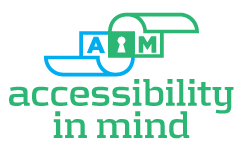Ensuring Indemnity With Documentation
Accessibility In Mind offers extensive accessibility reporting supporting all recognized standards, guaranteeing compliance. Whatever your specific requirements may be, AIM can remediate your documents to comply.
- Section 508: Section 508 was originally added as an amendment to the Rehabilitation Act of 1973 in 1986. It requires Federal agencies to make their electronic and information technology accessible to people with disabilities. The regulations are broad in nature and are interpreted differently by different agencies. AIM can provide Section 508 specific reports certifying compliance.
- PDF/UA: PDF/UA (“Universal Accessibility”) specification, or ISO 14289, was published by the International Organization for Standardization (ISO) in August, 2014. PDF/UA requires Tagged PDF (ISO 32000-1, 14.8), and adds a variety of qualitative requirements, especially regarding semantic correctness of the tags employed. It is the first fully accessible standard ISO has ever published. AIM can provide PDF/UA specific reports certifying compliance.
- WCAG 2.0: The current version, was published in December 2008 and became an ISO standard, ISO/IEC 40500:2012 in October 2012.It consists of 14 guidelines which are general principles of accessible design, primarily for websites, but applicable to PDF accessibility. AIM can provide WCAG specific reports certifying compliance.
- HHS: The United States Department of Health and Human Services (HHS) maintains a checklist defining their interpretation of Section 508, providing specific guidance on compliant PDF structure. AIM can provide HHS-specific reports certifying compliance.
Every remediated document is delivered with time-stamped Adobe Acrobat Pro 11 full accessibility reports, and NetCentric CommonLook reports are available for all accessibility standards. These reports prove due diligence in compliance with the most stringent requirements, and ensure indemnity from any legal challenges to document compliance.

